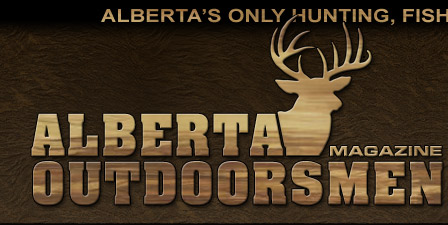 |
The 2007 hunting season marks the start of another year of monitoring Alberta’s wild deer population for chronic wasting disease (CWD). It is a disease that has become the single biggest threat to our wild deer and a disease that researchers appear to be no closer to solving now—even with some of the world’s leading scientists—than they were 20 years ago. The difference now, however, is that the disease is rapidly spreading across North America at an alarming rate.
And the costs associated with trying to eradicate or control the spread of CWD have become astronomical with hundreds of millions of dollars expropriated from wildlife budgets across North America. Dollars needed for many conservation programs are being diverted from wildlife agencies, including our own Sustainable Resource Development, and being spent on research, testing, disposal and depopulation programs in an effort to stop CWD. The total cost of the recent winter CWD program along our eastern border alone was more than one million dollars—a tidy sum that could have been better spent on other programs requiring financial support.
But are we fighting a non-winnable battle based on some of the practices we—and particularly Saskatchewan—continue to allow?
If you want to stop the spread of a rash, you don’t scratch it. But with CWD and its entire unknown, we continue to scratch where maybe we shouldn’t be.
Since 2005, 29 cases of CWD have been found in wild white-tailed deer and mule deer in Alberta. Not surprisingly, all 29 cases have been detected along the border with our neighbours to the east where the practice of baiting wild cervids for the purpose of hunting—a practice considered illegal in both Alberta and Manitoba—is ongoing and extensive.
| This 2006 map shows a direct correlation between game farms and CWD in our wild cervid herds. |
 |
● CWD Infected Wild Cervids.
■ Areas where CWD has been found in captive cervids.
(#) Indicates total number of captive herds infected. |
Researchers believe that baiting wild cervids can be an accelerant for CWD to spread because of the created high density of animals showing up at the bait station.
Having participated in a baited hunt in Saskatchewan myself, I know for a fact that bait stations increase traffic to a high degree. But are they necessary? And at what risk does Saskatchewan put our deer herds by allowing baiting?
Both Alberta and Saskatchewan allow game farming—a practice many believe to be the biggest step backward in the history of conservation. The domestication, commercialization and privatization of wildlife have in turn opened up the door to many issues. One of which is the fostering and spreading of disease. Like baiting, game farming creates a high population of animals that share fluids on a regular basis. Add in the high level of stress created by high fences, and these animals are very open to the ravages of disease.
Game farming also allows for the transport of animals across borders. If you wanted to sell your prize Alberta bull elk to a hunt farm in Saskatchewan, or purchase a bull from there to bring here, you could!
According to our Agriculture Department, “All game farm animals, including carcasses, transported within Alberta must be accompanied by a livestock manifest unless there is a permit for export from or import into Alberta.”
From the same source, “In September 2004, the Alberta Government began allowing elk, white-tailed deer, and mule deer from anywhere in Canada and the United States to live on Alberta farms. To qualify for importation into Alberta, cervids must meet strict criteria to ensure that CWD is not imported into the province. Both of these policies were developed based on a scientific risk assessment.”
 |
| CWD is the biggest threat facing our wild cervids. Can we stop it? |
The interesting part here is the statement that says “cervids must meet strict criteria to ensure that CWD is not imported into the province.” Somehow I don’t think that “strict criteria” means dead, which is the only known way to detect CWD in living animals.
Is the farming and transporting of elk and deer in both Alberta and Saskatchewan conducive to the fight to eliminate CWD? Or is it allowing for the continued fostering and spreading of disease? Considering CWD was discovered in wild cervids in areas where game farming was started and continues to be practiced, one would think so.
While Alberta has only discovered one game farmed elk and two game farmed deer with CWD, Saskatchewan has discovered CWD on more than 40 game farms. Ironically, many of these game farms are in the direct area where Alberta’s CWD Surveillance program is in effect. Is this just mere happenstance, or is there a direct correlation between the two?
Many hunters use lures or scents when hunting. Many of these lures and scents are created from urine collected from game farms and then bottled, transported and sold across North America. With little or no way of knowing if these products are contaminated, wouldn’t it be wise to avoid their use? Manitoba has banned their use for this very reason. Why do we in Alberta and Saskatchewan continue to allow the use of these products? With many artificial lures and scents available on the market, many believe their use is dangerous and unnecessary.
CWD is creating huge financial burdens to our wildlife managers and threatening the very existence of our wild cervids. Yet we continue to allow many of the aforementioned practices to continue.
Are we ignoring the signals because of political red tape?
CWD is a dangerous game and one that shouldn’t be played frivolously. But it appears that is exactly what we may be doing. ■
For previous Outdoor Pursuits click here.
|


